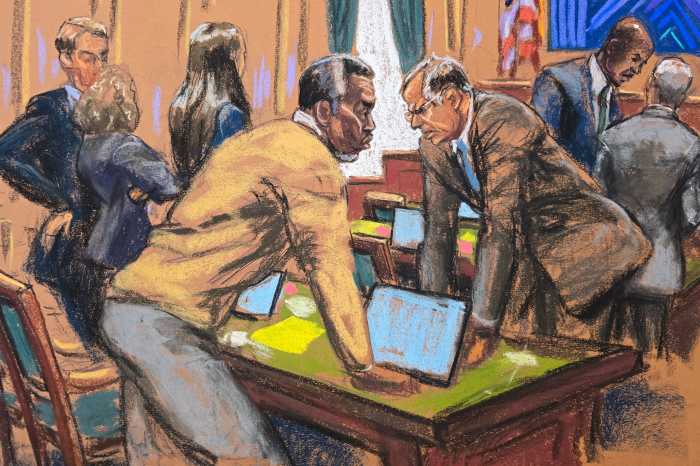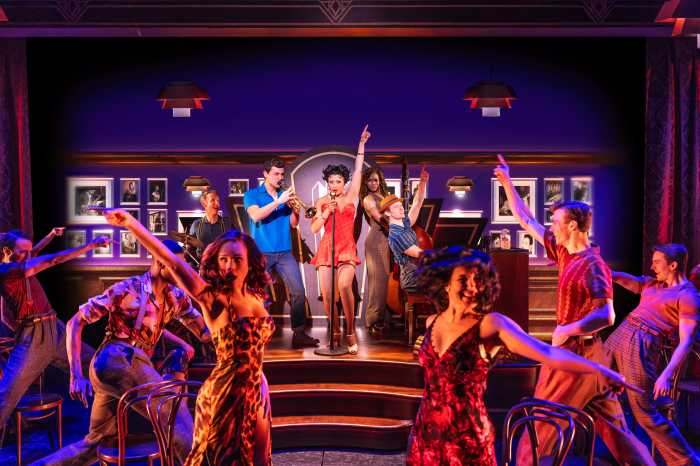Writer Peter J. Tomasi grew up with the George Washington Bridge in his window, a view that inspired a lifelong love and appreciation for infrastructure many New Yorkers take for granted.
But it was the Brooklyn Bridge and the drama-filled tale of the Roebling family that sparked his imagination and a decades-long quest to tell this classic story of grit and perseverance.
Tomasi, known for his work as a writer and editor at DC Comics, has finally brought his passion project to life. He spoke with amNewYork about his new graphic novel “The Bridge: How the Roeblings Connected Brooklyn to New York,” illustrated by Sara DuVall.
What was it about bridges that captivated you?
Just the sheer enormity of the George Washington Bridge. I grew up in Washington Heights and it was looming in my window every night, the great lights and spending a lot of time on the bridge itself. It dwarfed you so completely. It never made me feel small, it just made me interested in how something that big could be put together.
I started to look at other bridges and then I heard the story of the Brooklyn Bridge. That story — wow — it just hit me in the head and in the heart and it just completely pulled me in.
When you were a teenager, you walked over all the bridges in New York City?
I would disappear, my mother would think I was in the neighborhood. I would take my wonderful 35 cent token at that time and get downtown and ride the A train. I would switch over to the 4 or the 6 and just walk over the Brooklyn Bridge countless times. I would enjoy the egg creams and the pizza. There was just a gothic feel to the bridge and being a Batman fan, that helped. It just felt like it belonged in Gotham City.
At that time, I discovered a lot of picture books about the Brooklyn Bridge. But the magical tome was the David McCullough book “The Great Bridge.” I learned so much more about it. Just the history, the politics, the graft and the song and dance Washington and Emily Roebling had to do to make sure that bridge would go up.
You thought about this project for a long time. When did you finally decide to start working on it.
After Sept. 11, 2001, I realized it really had to be done. I worked at DC Comics at that time, editing the Batman titles. It made me realize how everything was so fleeting. Who could have imagined those towers would not be part of our skyline anymore?
I did it as a screenplay. There was a lot of angst and anxiety (after 9/11) and it literally calmed me down writing it. I was writing something about construction and the indomitable will of people to carve the air from nothing to put something there.
Why did you think a graphic novel would be a good vehicle to tell this story?
I made The Black List of Hollywood — it was considered one of the best unproduced screenplays. At that point I had been at DC Comics for almost 10 years and done several graphic novels. I went to Abrams [book publishers] and they loved it. Sara just captured the screenplay exactly as I saw it. There’s a lot of humanity on the pages. It was like Christmas Day getting those pages.
You did extensive research on this story and the history of NYC at the time. How much of this was based in scholarship and did you have to take some liberties?
I have volumes of the Brooklyn Eagle. The New York Times and Harper’s Weekly were right on top of it as the bridge was going up. I traveled to Troy where Rensselaer Polytechnic Institute has a treasure trove of archives from the Roeblings. I was holding Washington Roebling’s journals, letters between him and Emily. When you are seeing their handwriting and holding the books that they held, it puts the hook in you and suddenly you are right there in the 1800s. It’s so close to historical fact. I didn’t want to Hollywood it up.
How would you describe the story of the Roeblings?
It’s like Apollo 11 in 1870, watching a moonshot where people are using the tools and the machines they had at the time. To span the East River at that time was like going to the moon. These people had everything thrown at them: nature, politics, tragedy and they just kept pushing through it until they got that bridge up and it is here 130 years later.
It’s a book about family and heart at its core and they just happen to have built one of the most amazing bridges that people from all around the world travel to see.





































